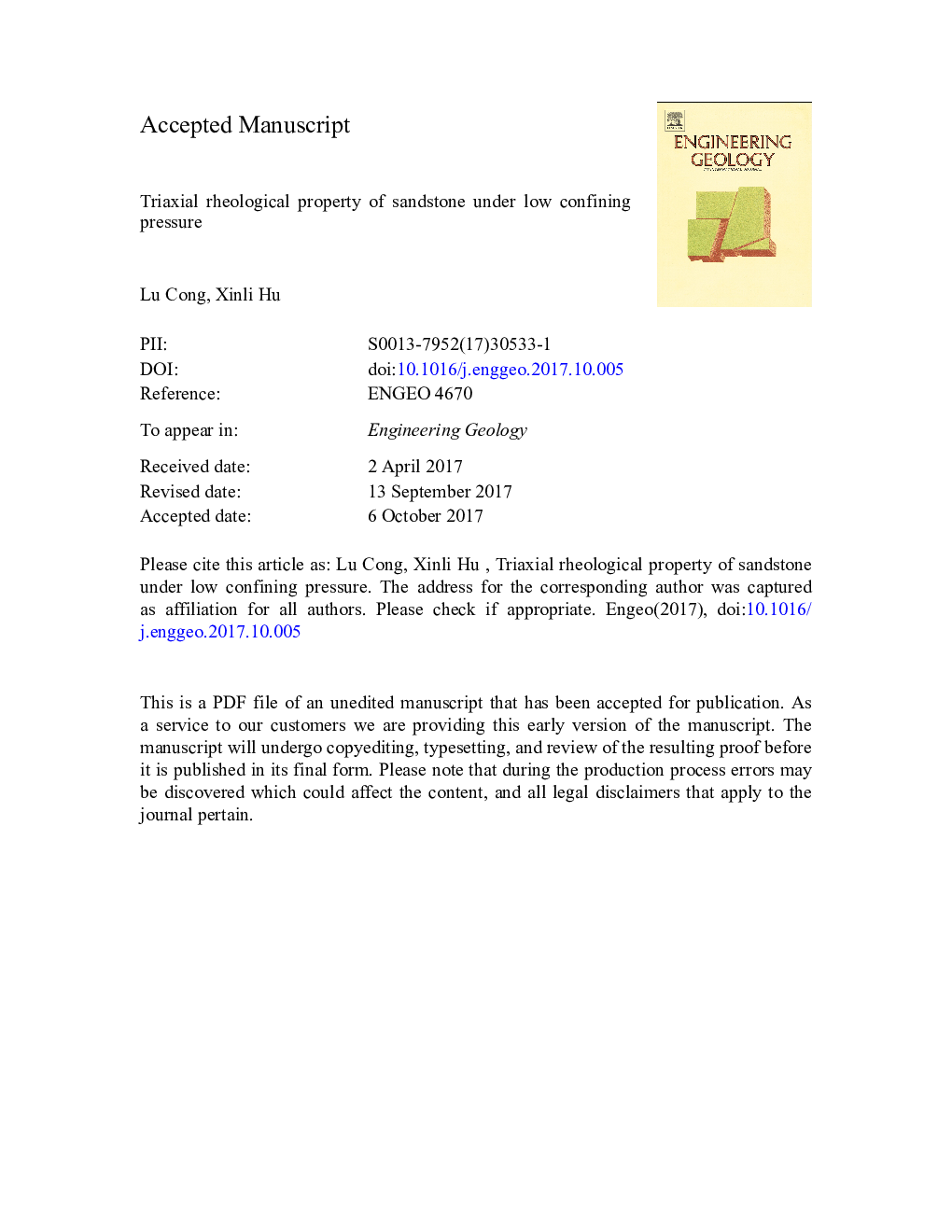| Article ID | Journal | Published Year | Pages | File Type |
|---|---|---|---|---|
| 8916019 | Engineering Geology | 2017 | 51 Pages |
Abstract
The creep behavior of the rock mass in an anchoring section affects the control effect of the piles and the long-term stability of the landslide and stabilizing-slide structure. The confining pressure of the anchoring section in the Majiagou landslide in the Three Gorges Reservoir is low. To study the creep behavior of sandstone at low confining pressures, the triaxial compression test and triaxial creep test are performed on the Jurassic sandstone in the Three Gorges Reservoir at three low confining pressures (i.e., 3.0Â MPa, 5.0Â MPa and 7.0Â MPa). The test results show three typical stages (initial creep, steady-state creep and accelerated creep) when the deviatoric stress is greater than the yield stress. With the test results in this study, an improved Burgers model is developed to describe the initial creep and steady-state creep; furthermore, a nonlinear Newton component is added to the accelerated-creep model. The test data at all stages are well fitted by the developed creep models. In this paper, we take the critical stress that causes the steady-state creep as the long-term strength. With the developed creep models, the long-term strength of the sandstone can be derived. In comparison to the short-term strength, the internal friction angle and cohesion of the long-term strength decrease by 15% and 13%, respectively, and the compression strength could be decreased by more than 50%. Thus, in the design of stabilizing piles of the Majiagou landslide, the effect of rock creep on the strength should be considered.
Keywords
Related Topics
Physical Sciences and Engineering
Earth and Planetary Sciences
Geotechnical Engineering and Engineering Geology
Authors
Lu Cong, Xinli Hu,
